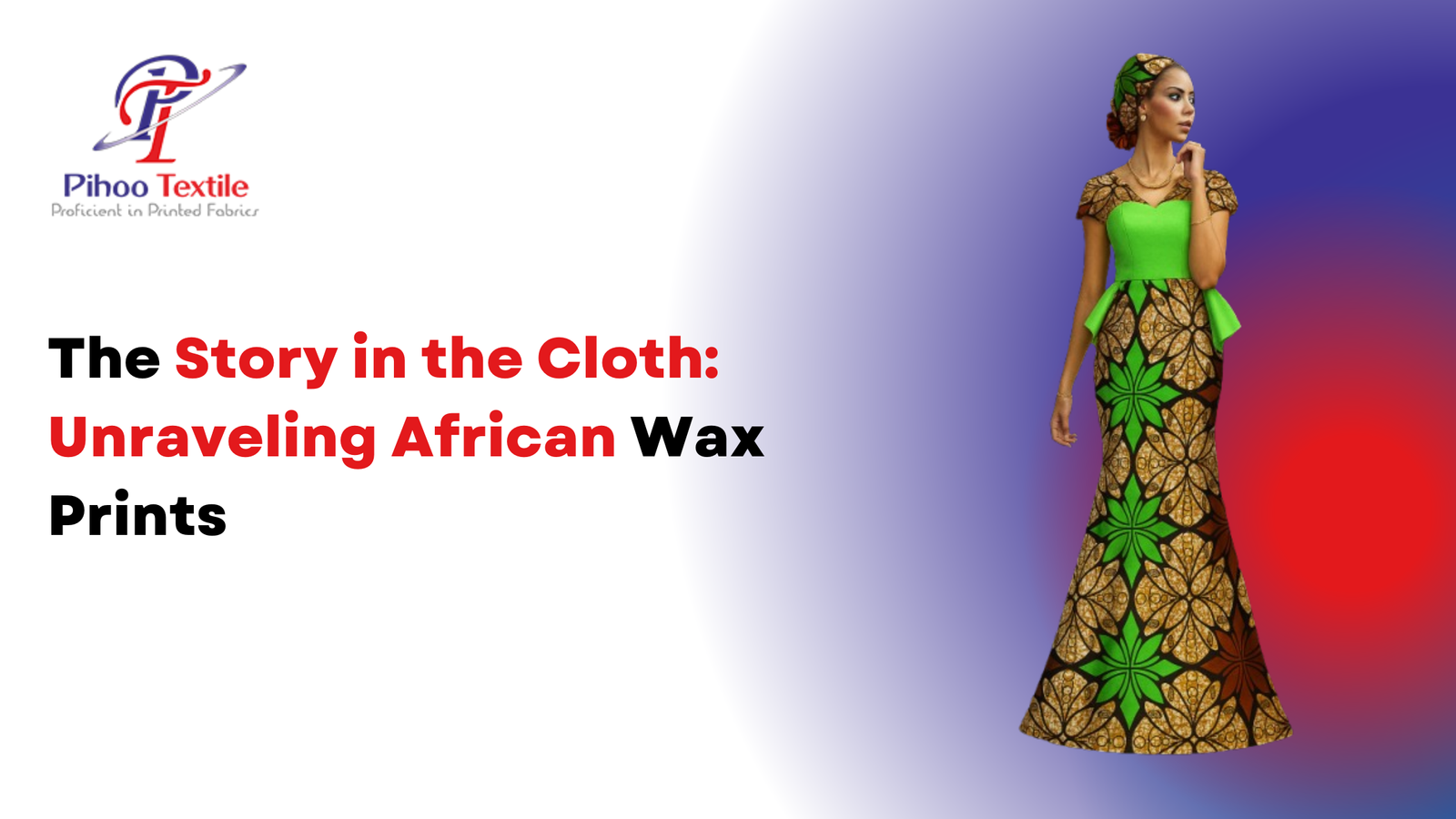The Story in the Cloth: Unraveling African Wax Prints
African wax print fabric is a 100% cotton textile, best known for its bold patterns, vibrant colors, and waxy sheen. While its biggest following is in West Africa—think Nigeria, Ghana, Senegal, and Gambia—its popularity spans East African countries like Kenya and Tanzania and has gone global, worn by fashionistas and traditionalists alike. More than just a fashion statement, each pattern holds meaning, telling stories of unity, identity, and celebration.
The Remarkable History of African Wax Prints
The roots of African wax print fabric reach back to the 19th century, tracing an unexpected journey from Indonesia to Africa. Dutch merchants, inspired by Indonesian batik techniques, began importing and adapting the style for European factories. Early production targeted Indonesia, but local tastes soon shifted demand. The vibrant, repeat motifs caught the eye of African buyers, particularly in Ghana and Nigeria, who saw endless cultural storytelling possibilities.
African entrepreneurs in these regions began commissioning, then producing their versions—infusing local symbols, colors, and stories into every cloth. Over time, what began as a colonial export evolved into a cherished homegrown industry. Today, African wax print boasts not only social and cultural meaning but symbolizes economic empowerment and creative independence within Africa.
The Fascinating Production Process: Wax-Resist Dyeing
The unparalleled look of true African wax print comes from a labor-intensive process called wax-resist dyeing. It’s a blend of tradition and innovation:
- Preparation: It starts with high-quality, raw cotton fibers, spun into yarn and woven into a strong but soft grey cloth.
- Design: Custom patterns are carefully planned, often pulling from cultural motifs or modern trends.
- Wax Printing: Artisans use copper stamps—sometimes rollers—to press hot wax onto the portions of fabric intended to resist color.
- Dyeing: The cloth is dipped into vibrant dyes—traditional indigos, fiery reds, radiant yellows—and the wax resists, preserving the white space.
- Crackling Effect: Creasing or folding the waxed fabric before dyeing creates signature vein-like lines, giving the final print its textured, crackled appearance.
- Repeating: The process can be layered, adding colors and depth with each repeated waxing and dyeing.
- Washing and Finishing: Finally, the wax is washed out, revealing the seamless, multi-hued design, and the fabric is softened, pressed, and ready for tailoring.
This handcrafted approach allows for intricate, durable patterns that don’t fade or peel—each yard a testament to centuries of evolving textile artistry.
The Symbolism Woven Into Every Print
African wax print fabrics are not just beautiful—they carry immense cultural symbolism. Each color, motif, and arrangement can encode information about:
- Tribal Affiliation: Some prints are linked to certain regions or ethnic groups, easily identifying the wearer’s origins or alliances.
- Social Status and Occasion: Special patterns or colorways are reserved for weddings, funerals, or rites of passage, marking the wearer’s place in the community.
- Personal Expression and Protest: During colonial times, wax prints became a silent language of resistance and pride. Choosing certain patterns could signal defiance or solidarity.
In modern Africa, wax prints communicate everything from political allegiance to life milestones. The fabric continues to evolve as a symbol of identity, empowerment, and pride, both at home and in the African diaspora worldwide.
Adapting to Contemporary Fashion
Today, African wax print is far from confined to traditional dresses and headwraps. Designers use the fabric in suits, accessories, home décor, and even footwear. International runways now celebrate wax prints as a global fashion staple, applauding both their artistry and versatility.
Brands like Pihoo Textiles have embraced the blend of traditional techniques with modern aesthetics, offering custom designs and bold new applications that speak to buyers across the globe.
A Sustainable & Community-Driven Art
Wax printing remains closely tied to artisan communities—a pillar of sustainable, ethical fashion:
- Eco-Friendly Production: Many manufacturers maintain traditional methods that use less water and fewer synthetic chemicals compared to mass production.
- Jobs and Skills: The process fosters employment for thousands of craftspeople, especially women, directly supporting local economies.
- Preserving Heritage: Every purchase of authentic wax print helps keep centuries-old skills alive.
Where to Find Authentic African Wax Prints?
With global interest soaring, sourcing authentic wax prints is crucial. Double-check that the fabric is 100% cotton, created with true wax-resist methods, and ideally, purchased from reputable suppliers who support artisan communities.
As a leader in premium African fabrics, Pihoo Textiles combines the highest quality standards with innovative design, ensuring each print carries not just a story, but real value, comfort, and authenticity.
Conclusion: Why African Wax Prints Endure
From its Indonesian batik roots to the bustling markets of Ghana, African wax print fabric has become a symbol of resilience, artistry, and self-expression. Its rich history intertwines with moments of transformation, from festival celebrations to pivotal movements for cultural independence.
To wear—or work with—African wax print is to join in a vibrant, living tradition. Choose Pihoo Textiles for patterns that portray the dynamism, pride, and legacy stitched into every meter. In every fold lies a story—what will yours be?


